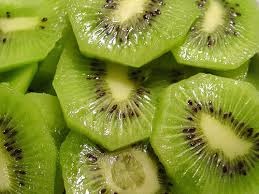 cientists have investigated the effects of different sanitizing methods as alternative to chlorine use in minimal processing of kiwifruit on microbial count, packaging atmosphere composition, colour and firmness of fresh-cut kiwifruit stored at 4°C for 10 days.
cientists have investigated the effects of different sanitizing methods as alternative to chlorine use in minimal processing of kiwifruit on microbial count, packaging atmosphere composition, colour and firmness of fresh-cut kiwifruit stored at 4°C for 10 days.During minimal processing, fruit were subjected to 4 sanitizing treatments:
1. 150 ppm free chlorine supplied as sodium hypochlorite solution at pH 6.5 (2 min, 10°C);
2. 0.2 ppm ozone supplied as an ozone solution in water (2 min, 10°C);
3. UV radiation at a dose of 1 kJ/m2;
4. Heat shock by immersion in hot water at 95°C for 30 seconds.
Results showed that UV radiation treatment and heat shock were effective in reducing the initial microbial population by about 1 log unit, and in maintaining the microbial load below the recommended limits (6-7 log CFU/G total aerobic mesophiles) during 10-day storage. On the contrary, treatments with chlorine and ozone were not significantly effective in reducing the microbial load.
Moreover, the UV treatment reduced the respiration rate of kiwifruit slices and had a beneficial effect on flesh firmness; while no effects were observed on flesh colour among tested sanitizing treatments.
Scientists conclude that UV radiation treatment, as a sanitizing method, seems to be an interesting and promising methodology both for kiwifruit minimal processing and for overall quality preservation during fresh-cut kiwifruit shelf-life.







